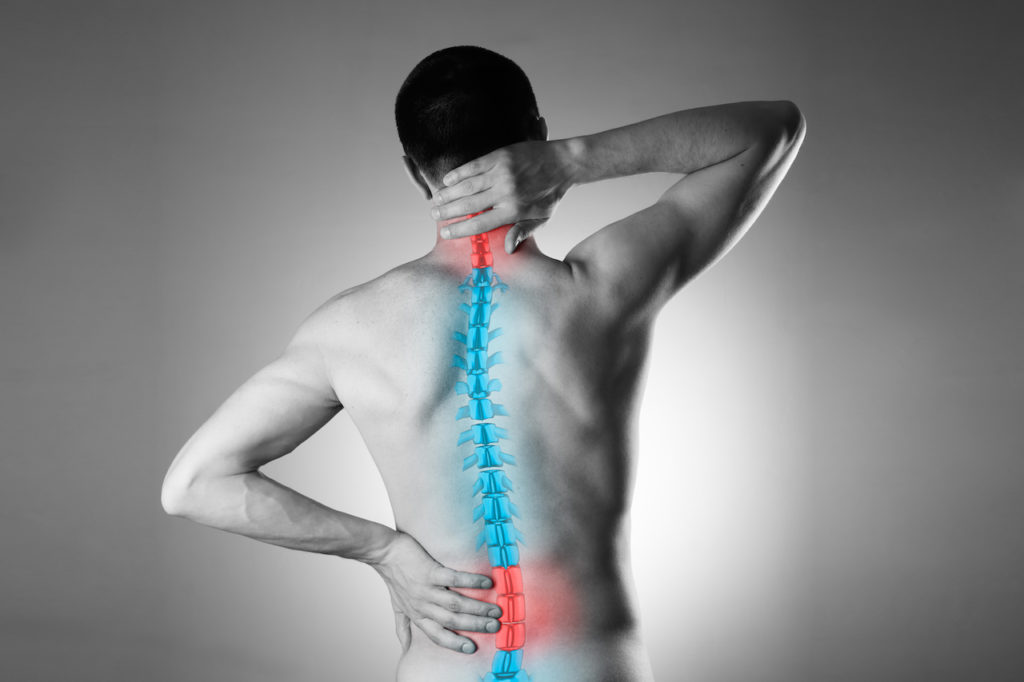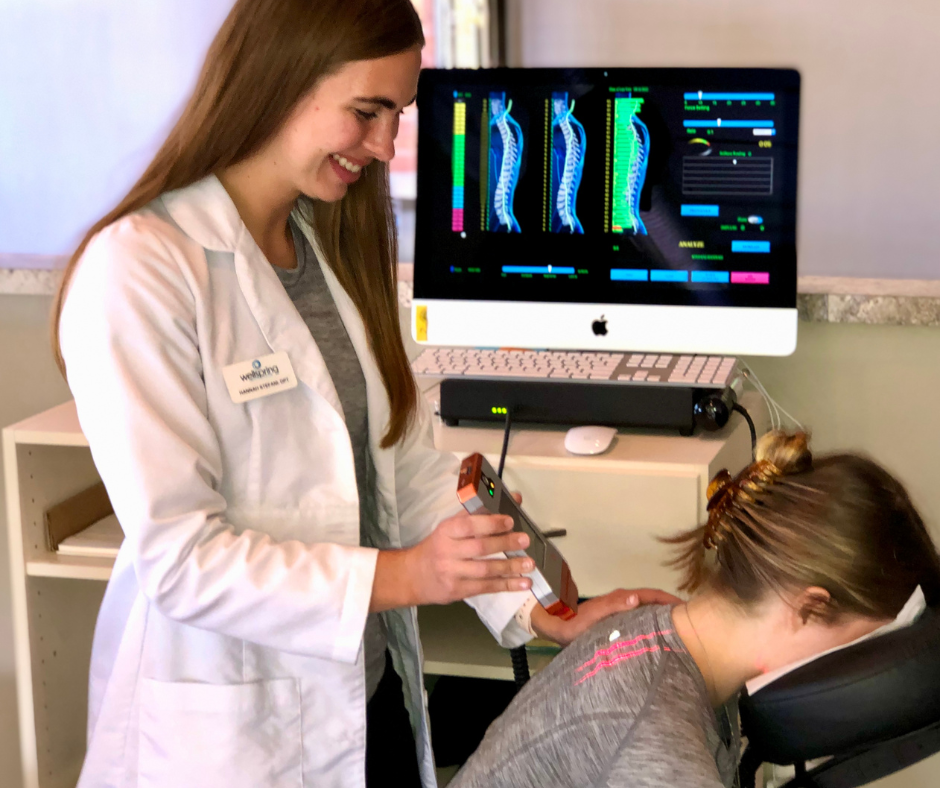Herniated Disc Symptoms And Treatment.
How do you know whether you have a herniated disc or it’s just back pain? One telltale sign can be where the pain is located.
Strange neck pains, back pains, or extremity symptoms can indicate a variety of potential problems – including one or more herniated discs.
How can you tell for sure whether you have this specific problem? If you do have a herniated disc, what can you do about it?
Herniated discs can occur anywhere in the spine, but the lower back and neck are the most common areas. The pain may radiate from the neck into the arm or hand or lower back into thighs, buttocks, or calves. A herniated disc can cause pain whether you’re resting or active. Even a cough or sneeze can cause pain as it puts pressure on pinched nerves.
The benefits of physical therapy for herniated discs
Physical Therapists are movement experts who identify, diagnose, and treat pain and movement dysfunction. Physical therapy is recommended by the Centers for Disease and Control Prevention (CDC) as a safe alternative to opioid medication to treat herniated discs in the spine.
Choose An Integrative Holistic Approach that combines medical testing with holistic physical therapy treatments to heal herniated discs and avoid surgery and medication. The goal of treatment is to restore balance and movement, allowing the body to heal. Some common methods used by holistic physical therapists for disc herniation include:
- Manual Therapy. Manual therapy is a holistic approach that mobilizes and releases stiff joints, muscles, and soft tissues, relieving pressure on the herniated discs so they can begin to heal. At Wellspring Health Center in Eden Prairie, MN, our physical therapists have received extensive training in specialized manual therapy techniques, including myofascial release, joint mobilization, soft tissue massage, and active release technique (ART).
- Pilates Matwork Therapy. Unlike conventional physical therapy, which focuses on strengthening just the area of pain, our holistic approach creates healthy coordinated movement through the whole body to reduce pain and support long-term recovery. A common root cause of herniated discs is weak imbalanced core muscles with poor posture. Pilates Matwork Therapy rehabilitates the core muscles that stabilize the muscles supporting the spine.
- Cold Laser Therapy. Cold Lasers AKA Low-Level Lasers are an amazing technology that significantly enhances the effects of physical therapy. Exercises and therapy procedures work at the level of the soft tissues and joints. Low-Level Lasers work at the cells’ level by increasing the energy that cells need to regenerate and heal and increase their ability to communicate with each other.
- Electrical Muscle Stimulation. This modality can trigger an innate and completely natural analgesic effect by stimulating specific sensory nerve fibers (including A-beta, A-delta, and C fibers), which decrease the sensation of pain and release neurotransmitters that prolong the pain-relieving effects.
- Trigger Point Injections. Trigger point injections are proven effective for chronic pain management. Trigger points are hyper-irritable spots in tight bands of muscles and can often be felt as a tender knot. They can restrict movement, cause muscle weakness, and refer or radiate pain into other parts of the body. Our sports medicine providers work with our physical therapists to determine if you would benefit from trigger point injections.
- Therapeutic Exercises. Loss of muscular strength can contribute significantly to pain because the weaker your muscles get, the more stress is put on your joints. Physical therapy centers around specific exercises designed to target various muscles and strengthen them so that they better support your joints.
A physical therapist will also teach you self-care principles and home exercises. This way, you can prevent further injury and enjoy the long-term effects of physical therapy. With physical therapy, you’re an active participant in your recovery.
Herniated discs can be very painful injuries that impact your day-to-day life. The good news is that you don’t necessarily have to get surgery to repair your herniated disc. In fact, studies have shown that 90% of patients were able to recover by pursuing non-surgical courses of treatment like physical therapy. That percentage is a testament to how effective physical therapy is in the treatment of a herniated disc.
How do I know if I have a herniated disc?
A good way to determine if you have a herniated disc is to visit your physician. Likely, your doctor will do a physical exam and may even take an x-ray. Integrative clinics like Wellspring Health Center in Eden Prairie, MN, have a medical provider and digital x-ray services on-site so a diagnosis can be reached sooner and they are able to order further tests like an MRI or CT Scan if indicated.
While an x-ray won’t show a herniated disc, it can help rule other causes of your pain like a fracture. An MRI test can show detailed 3-D images of the spinal cord and pinpoint if there is a herniated disc. It also shows which nerves are affected.
The purpose of spinal discs is to act as a shock absorber when you engage in daily activities, like walking, sitting, lifting, and running. Each disc has a soft inner ring and a tough outer ring. When the outer ring is injured, the inner ring may protrude out and cause pain.
Common causes include weak muscles, age, being overweight, sitting long hours, tech neck, or leading a sedentary lifestyle. And if you lift something heavy or sustain an injury, you can also incur a herniated disc.
What can I expect from treatments?
Herniated discs can be successfully treated with physical therapy. At your initial appointment, one of our physical therapists will evaluate to determine the root of your pain and coordinate any further testing with our medical provider to determine if you have a herniated disc.
Once the cause of your pain is clear, an individualized treatment plan will be created for you, based on your specific needs.
This typically includes a series of stretches and exercises aimed at relieving your pain, improving your function, and promoting the natural healing process of your body. Additional holistic treatments may be added as your physical therapist deems fit. These include:
- Manual therapy techniques
- Spinal mobilization
- Core muscle & posture strengthening
- Cold laser therapy
- Trigger Point Injections
- Electrical Muscle Stimulation
- Massage Therapy
- Education on posture and lifting mechanics
Your physical therapist will also advise you on any lifestyle changes that may be recommended in order to prevent herniated discs from developing again in the future.
Holistic physical therapy is one of the safest and most effective ways to treat herniated discs. It is a holistic and non-invasive approach that, in many cases, has been able to eliminate the need for harmful drugs or surgical intervention.
Learn how to get started
If you are suffering from lower back pain and think it may be due to a herniated disc, call or text Wellspring Health Center today.
We’ll help discover the origin of your pain and treat you accordingly. Schedule a complimentary consultation to get started and begin your journey toward living your highest quality of life, free of back pain!
Sources:
Tags: Natural Pain Relief, Natural Treatment, Health, Lower Back Pain, physical therapy, physical fitness, fitness, physical therapist, physical activity, health and wellness, Wellspring Health Center, Herniated Disc, Back Pain




